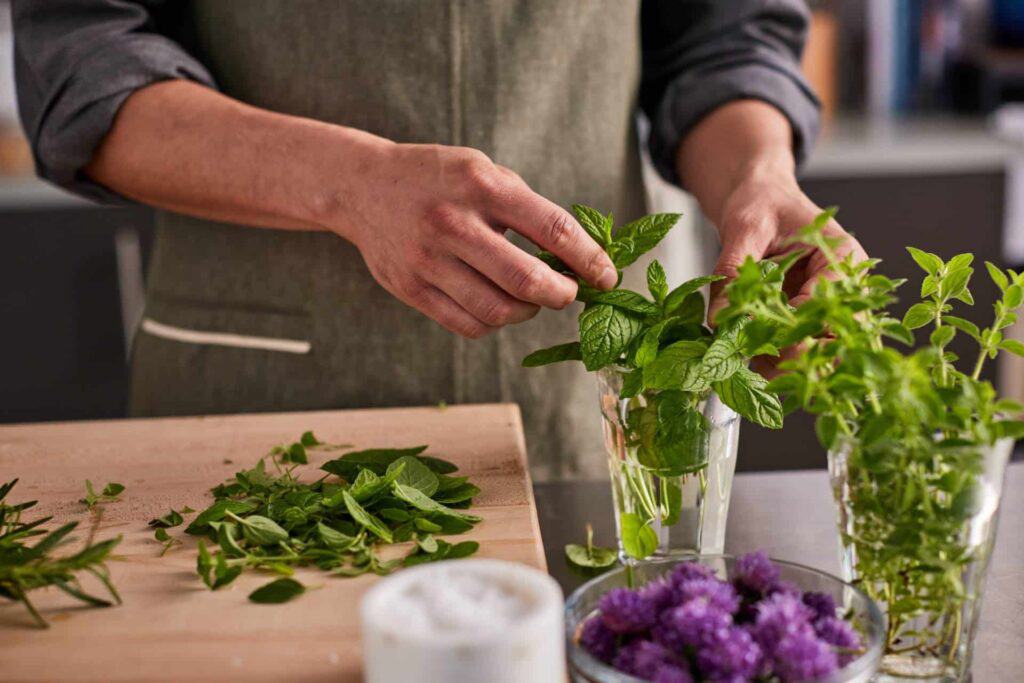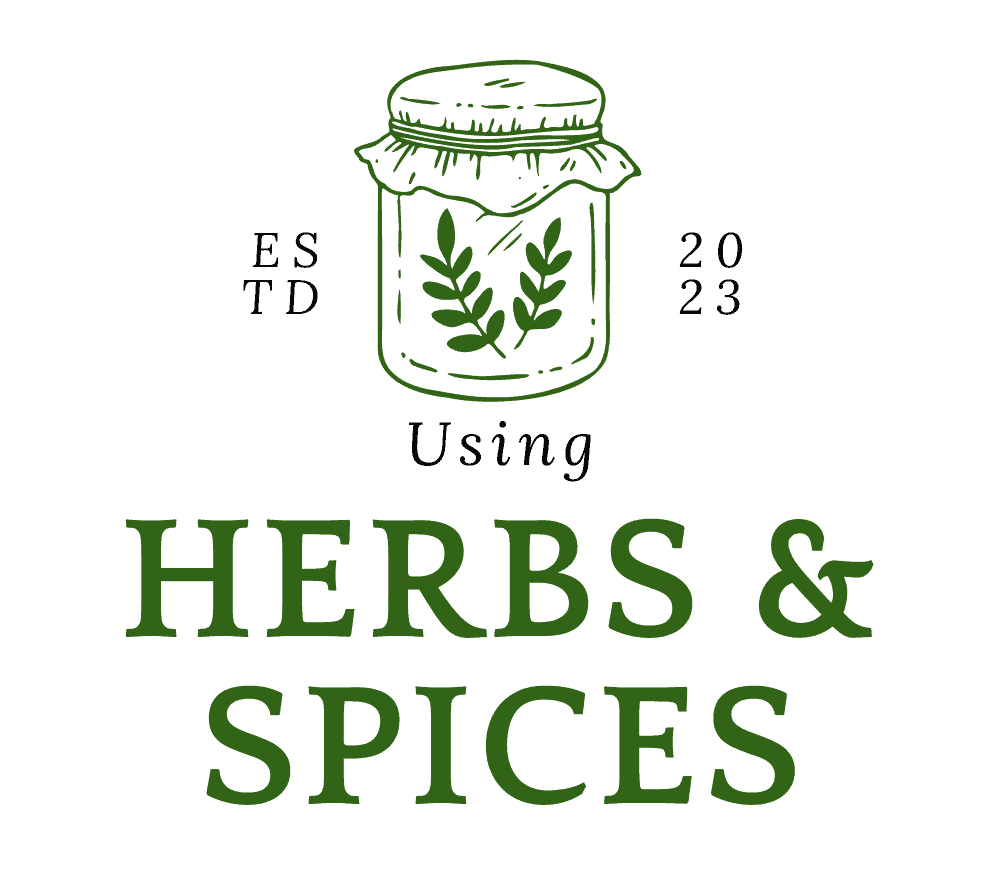SUMMARY: Herbs last longer in different forms because drying them removes moisture, which slows down spoilage and keeps the herbs usable for a longer time. Comparing dried and fresh herbs, dried ones generally offer extended shelf life, making them a staple in kitchens for their convenience and longevity.
Are you wondering why your fresh herbs quickly wilt while your dried herbs last for months?

Understanding the lifespan of herbs in various forms is crucial for any culinary enthusiast or home cook.
- The basics of herb preservation
- Maximizing the shelf life of fresh herbs
- The enduring quality of dried herbs
- Direct comparison between the longevity of dried and fresh herbs
Continue reading to gain valuable insights into herb preservation and make the most out of your herbs.
The Essentials of Herb Preservation
Preserving herbs effectively opens up a world of flavor and convenience for cooks at all levels. The process of preserving herbs, whether by drying, freezing, or using preservatives, is an age-old practice that has both evolved and remained grounded in simple techniques over centuries. Understanding these essentials not only helps in extending the shelf life of herbs but also in retaining their aromatic potency.
At the core of herb preservation is the principle of reducing moisture content, which is a primary cause of decay and microbial growth. Modern methods have embraced technology, using dehydrators and vacuum sealers, while traditional methods rely on air drying or salt and oil preservation. Each method has its own merits and is suitable for different types of herbs and uses.
Deciding on the best method of preservation often depends on the specific characteristics of the herb and its intended use in cooking. Ultimately, the goal is to maintain the herbs in a state that is as close as possible to their natural, fresh state in terms of flavor, color, and nutritional value.
Fresh Herbs: The Lifeline and Care
Keeping fresh herbs at their peak is both an art and a science. Unlike their dried counterparts, fresh herbs possess a vibrant color, a tender texture, and a delicate aroma, which are essential for enhancing the flavor of countless dishes. The key to prolonging the shelf life of fresh herbs lies in understanding the right storage conditions.
The lifeline of fresh herbs starts from the moment they are harvested. To maximize their shelf life, it’s crucial to mimic their natural growing conditions as closely as possible. Most fresh herbs thrive in slightly humid environments with adequate air circulation. For home storage, wrapping the herbs loosely in a damp paper towel and placing them inside a resealable bag in the refrigerator can remarkably extend their usability. Alternately, storing them in a glass of water, much like a bouquet of flowers, in a cool spot, can keep certain herbs like cilantro and parsley fresh for up to two weeks.
However, not all herbs are created equal when it comes to storage requirements. Herbs like basil are more sensitive to cold temperatures and may benefit from being kept at room temperature. On the other hand, more robust herbs such as thyme and rosemary can tolerate cooler fridge environments better. The essence of preserving fresh herbs is recognizing these subtle differences and applying the appropriate storage method to each type.
Furthermore, regular inspection of the stored herbs is vital. Remove any leaves that start to show signs of wilting or browning to prevent the spread of decay. This proactive approach can significantly contribute to extending the freshness and viability of the herbs.
In essence, with meticulous care and proper storage techniques, the shelf life of fresh herbs can be optimized, ensuring they contribute their full spectrum of flavors to your culinary creations.
Dry Herbs: The Ageing Gracefully
Drying herbs is a time-honored method that not only extends their shelf life but also concentrates their flavors, making them a staple in various culinary traditions. When herbs are dried, the moisture that bacteria, yeasts, and molds need to grow is significantly reduced, thereby slowing down the decomposition process. This reduction in moisture content allows dried herbs to be stored for much longer periods than their fresh counterparts, often lasting up to a year or more when stored properly in a cool, dark place.
Optimizing the shelf life of dried herbs involves a few key techniques. It’s crucial to ensure that herbs are fully dried before storage to prevent any residual moisture from promoting mold growth. Using airtight containers for storage further protects them from moisture and air, both of which can degrade the quality of dried herbs over time. Additionally, keeping them away from direct sunlight helps preserve their color and aromatic properties.
While drying does alter the flavor profile of herbs, making them more subtle yet concentrated, it offers the advantage of having a ready supply of various herbs throughout the year, especially those that are season-specific. This method of preservation not only enhances the shelf life of herbs but also ensures that their nutritional value is retained to a great extent, contributing to their enduring popularity in preparing a myriad of dishes.
Comparing Shelf Life: Dry vs Fresh Herbs
When it comes to the shelf life of herbs, the difference between fresh and dried forms is significant. Fresh herbs, with their vibrant colors and potent aromas, are usually preferred for their ability to impart a burst of flavor to dishes. However, they come with a relatively short shelf life, typically lasting about a week or two when stored properly in the refrigerator. Their high moisture content makes them more susceptible to mold and bacterial growth, leading to quicker spoilage.
On the other hand, dried herbs, as mentioned earlier, benefit from a greatly extended shelf life due to the reduction of moisture, which inhibits the growth of microorganisms responsible for decay. Properly dried and stored herbs can retain their flavor and aroma for up to a year or even longer, making them a more practical choice for long-term storage. This makes dried herbs particularly appealing for anyone looking to maintain a well-stocked pantry without the frequent need for replenishment that fresh herbs demand.
From a culinary perspective, both forms have their place in the kitchen. Fresh herbs are often used for their bright, crisp flavors and are best added towards the end of cooking or as garnishes. Dried herbs, with their concentrated flavors, are suited for longer cooking times, allowing their flavors to meld into the dish. Understanding the strengths and limitations of each form allows for their optimal use, enhancing dishes with their distinct characteristics.
The choice between using fresh or dried herbs boils down to personal preference, availability, and the specific requirements of the dish being prepared. However, appreciating the differences in their shelf life and how best to store them can guide decisions on purchasing and preserving herbs, ensuring they remain vibrant and flavorful for as long as possible.
Extending Herb Shelf Life: Fresh vs. Dried Essentials Explained
We’ve delved into the nuanced world of herb preservation, shining a light on how different forms can significantly extend the shelf life of these aromatic essentials. Here are the critical takeaways from our exploration:
- The shelf life of herbs is profoundly affected by their form, with dried herbs typically lasting much longer than their fresh counterparts.
- Understanding the principles of herb preservation opens up myriad ways to enhance both their flavor and longevity.
- Effective storage methods for fresh herbs can dramatically prolong their usable life, preserving their vibrant flavors for culinary use.
- Drying herbs not only extends their shelf life but also concentrates their flavors, making them a versatile ingredient in a wide array of dishes.
- A comparison of dry versus fresh herbs reveals that different forms are suited to different culinary applications, each with its own set of advantages.
In conclusion, the longevity and culinary value of herbs in different forms are deeply influenced by the method of preservation. By embracing these methods, we can ensure that our herbs retain their best qualities for as long as possible, enriching our cooking and the pleasure of our dining experiences.
Herb Preservation FAQs
Why do dried herbs last longer than fresh?
Dried herbs last longer than fresh because the removal of moisture reduces the likelihood of microbial growth and decay. By dehydrating the herbs, we significantly diminish the environment needed for bacteria, yeasts, and molds to grow, thereby extending the shelf life of the herbs substantially. This process also concentrates the flavors, making dried herbs more potent.
Can freezing affect the shelf life of herbs?
Freezing can indeed affect the shelf life of herbs, often in a positive way by preserving their freshness and flavor for longer periods than refrigeration alone. When herbs are frozen, the water inside the plant cells expands and can sometimes damage cell walls, which may slightly alter the texture. However, the essential oils, which are responsible for the aroma and flavor of the herbs, remain intact, making freezing a worthwhile preservation method.
How to tell if herbs have gone bad?
To determine if herbs have gone bad, look for signs of spoilage such as a slimy texture, discoloration, or a foul odor. Fresh herbs, especially, are prone to such changes when they’ve exceeded their shelf life. Dried herbs, on the other hand, tend to lose their color and potency, and while they may not show visible signs of spoilage, they will not enhance your cooking as intended if they’re past their prime.
